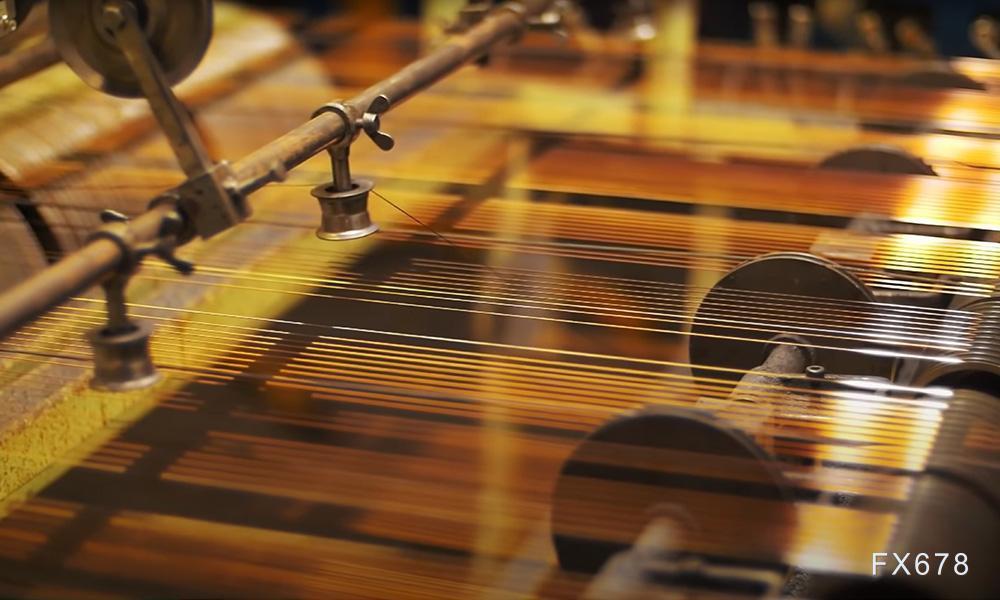CITIC Construction Investment Futures: Copper maintains high level
2025-10-10 13:40:37

Stock Index Futures: In the previous trading day, the Shanghai Composite Index rose 1.32%, the Shenzhen Component Index rose 1.47%, the ChiNext Index rose 0.73%, the STAR Market 50 Index rose 2.93%, the CSI 300 Index rose 1.48%, the SSE 50 Index rose 1.06%, the CSI 500 Index rose 1.84%, and the CSI 1000 Index rose 0.96%. The trading volume of the two markets totaled 2.653197 trillion yuan, an increase of approximately 471.786 billion yuan from the previous trading day. Among the Shenwan primary sectors, the best performing sectors were nonferrous metals (7.60%), steel (3.38%), and coal (3.00%). The worst performing sectors were media (-1.43%), real estate (-1.39%), and social services (-1.03%). Regarding basis, the IF and IH basis strengthened slightly, while the IC and IM basis weakened slightly. The annualized basis rates for the IH and IF quarterly contracts are 0.90% and -2.10%, respectively; while the annualized basis rates for the IC and IM quarterly contracts are -8.50% and -12.50%, respectively. For hedging purposes, quarterly contracts may be considered for short positions. Yesterday, the first trading day after the National Day holiday, both the Shanghai and Shenzhen stock markets saw a volatile upward trend, with significant gains. Trading volume in both markets rebounded significantly compared to the last trading day before the holiday. Looking at primary sectors, yesterday's gains in the nonferrous metals sector were significant, boosted by policy factors and the rapid rise in international precious metals prices during the holiday. Steel and coal also saw significant gains. Regarding indices, both large-cap and small-cap indices performed strongly. The slight weakening of the IC and IM basis yesterday may offer some short-term long positions. As the important political meeting to be held in October approaches, the market has gradually shown a trend of raising expectations and trading policy expectations in advance. Currently, the expectations for the next stage of economic work arrangements are relatively positive, which may continue to push the index upward. It is recommended to maintain long positions in IC and IM.
Stock Index Options: Last trading day, the Shanghai Composite Index rose 1.32%, the Shenzhen Component Index rose 1.47%, the ChiNext Index rose 0.73%, the STAR Market 50 Index rose 2.93%, the CSI 300 Index rose 1.48%, the SSE 50 Index rose 1.06%, the CSI 500 Index rose 1.84%, the CSI 1000 Index rose 0.96%, and the SZSE 100 ETF rose 1.24%. Trading volume for the two markets totaled 2.653197 trillion yuan, an increase of approximately 471.7 billion yuan from the previous trading day. Among the Shenwan First-Level Sectors, the best-performing sectors were nonferrous metals (7.6%), steel (3.38%), and coal (3.0%). The worst-performing sectors were social services (-1.03%), real estate (-1.39%), and media (-1.43%). Recent news headlines have been relatively limited, with volatility primarily declining after the holiday. Put options strategies are suitable for short-term holdings. If fundamentals such as the macroeconomy and listed company earnings improve, the stock index has ample room to rise. Long-term, the market is likely to see a volatile strengthening trend with a gradually rising pivot point. Currently, stock index futures are trading at a significant discount. During corrections, consider a covered call strategy involving long stock index futures and selling out-of-the-money call options.
Treasury bond futures: Treasury bond futures rebounded on the first day after the holiday. Unilaterally, based on closing prices, the 30-year bond futures rose 0.46%, the 10-year bond futures rose 0.15%, the 5-year bond futures rose 0.07%, and the 2-year bond futures rose 0.02%. The yield on the most active 30-year bond fell 0.5 basis points to 2.125%, the yield on the most active 10-year bond futures fell 0.55 basis points to 1.7775%, and the yield on the most active 2-year bond futures fell 1 basis point to 1.48%. Regarding inter-product spreads, 4TS-T, 2TF-T, and 3T-TL futures futures changed by -0.08 yuan, -0.01 yuan, and -0.05 yuan, respectively. Unilateral strategies: Both stocks and bonds performed strongly on the first day after the holiday, with TL and T performing particularly well. The 1.1 trillion yuan outright reverse repo on the first day boosted market confidence. However, the downward trend in bond futures remained unchanged. We recommend going long on TL for short-term trading. Cross-product strategy: The strong resilience of T-coins is expected to continue. We recommend a short (TS) and long (T) arbitrage strategy. This arbitrage strategy currently outperforms single-sided strategies. Hedging strategy: The T-coin net basis has fallen back to a low level. We recommend a long T-coin basis portfolio.
Ferroalloys: The National Development and Reform Commission and the State Administration for Market Regulation issued announcements regarding regulating disorderly price competition and maintaining healthy market price order. Black metals saw a slight rise in the night session. However, alloy supply and demand fundamentals remain slightly weak, putting upward pressure on prices. Factory production remains high, inventory levels are substantial, and spot supply is ample. On the demand side, steel mill output remains high, and static alloy demand is strong, but end-user demand for steel has not significantly improved, placing some pressure on steel mills. Focus will be on the implementation of macroeconomic policies and anti-involutionary policies in October. View: Fluctuation and weakness are expected.
Shanghai Lead: Shanghai lead prices fluctuated strongly overnight. From a fundamental perspective, on the supply side, scrap battery procurement remains volatile, with recyclers largely avoiding price pressures and seeking higher prices to sell, putting downward pressure on scrap battery prices. Recycled lead companies have seen some recovery from losses, but some continue to suspend production for maintenance, limiting any short-term impact from restarts. On the primary lead side, the supply and demand situation for lead concentrate remains tight, with processing fees expected to stabilize. On the supply side, refineries in North China have partially resumed production, and with delivery deadlines approaching, overall supply is tight. On the demand side, overall restocking is limited, and there is little appetite for proactive inventory replenishment in the short term. Overall, lead prices have performed well, driven by macroeconomic sentiment, but given the limited improvement in fundamentals, the rebound is expected to be weak.
Shanghai Zinc: Overnight, Shanghai zinc prices fluctuated strongly. Macroeconomic news was relatively subdued, but residual positive momentum from the holiday pushed non-ferrous metals higher. From a fundamental perspective, the decline in domestic zinc smelting costs in October supported the lower bound for zinc prices. A drop of approximately 300 TC has brought zinc smelting margins back to around June levels. On the supply and demand side, according to Baichuan Yingfu's production schedule, October supply increased by approximately 20,000 tons month-over-month. Coupled with the significant reductions and shutdowns in galvanizing operations during the National Day holiday, October consumption is expected to see limited growth compared to September. Overall, domestic zinc ingot supply and demand remain dominated by accumulated overstocking. Yesterday, social inventories saw a slight increase of less than 10,000 tons, easing the overstock pressure. Overall, the domestic-to-external price gap remains firm, limiting the potential for zinc prices to rise in the short term.
Rubber: On Thursday, domestic full latex was priced at 14,700 yuan/ton, up 350 yuan/ton from the previous day; Thai No. 20 mixed rubber was priced at 14,850 yuan/ton, up 250 yuan/ton from the previous day. Raw material prices: Yesterday, Thai rubber closed at 53.9 baht/kg, down 0.9 baht/kg from the previous day; Thai cup rubber closed at 50.7 baht/kg, up 0.4 baht/kg from the previous day; Yunnan rubber closed at 13.9 yuan/kg, down 0.4 yuan/kg from the previous day; Hainan rubber closed at 12.9 yuan/kg, down 0.2 yuan/kg from the previous day. As of September 28, 2025, China's natural rubber social inventory was 1.088 million tons, down 15,000 tons (1.4%) from the previous day. China's total dark rubber social inventory was 661,000 tons, down 0.87%. Spot inventory in Qingdao decreased by 1%, while that in Yunnan increased by 1.7%. Vietnamese 10# rubber inventory decreased by 8%, and NR inventory subtotal decreased by 5.7%. China's total light-colored latex inventory was 427,000 tons, a 2.2% decrease month-over-month. Among these, old full-latex latex and 3L latex decreased by 2.4%, while RU inventory subtotal decreased by 1.9%. Viewpoint: Following a continuous cooling of market expectations, pricing at past highs assumed continued future demand growth. However, when the future arrived, this growth expectation failed to materialize, correcting the pricing bias in the balance sheet. (Important note: "good" at a given point in time does not necessarily translate to "better" dynamically, especially with regard to future changes.) Looking back, although a significant increase in demand is relatively limited, and a significant decline in demand is also unlikely (i.e., the April tariff expectations priced into the most pessimistic balance sheet scenario), demand growth in the Chinese market has gradually materialized. The current balance sheet does not exhibit significant contradictions, resulting in limited unilateral price trends. In the short term, the RU and NR pricing range will be relatively stable (within 500 points).
Rebar: Domestic steel market prices saw mixed fluctuations, with rebar prices rebounding from low levels in the afternoon, and trading sentiment gradually improving. Blast furnace mills are experiencing average profits, with relatively few voluntary production cuts or shutdowns. Electric furnace mill profits have recovered slightly, and in the short term, EAF mills are more motivated to resume production, maintaining relatively high supply levels. However, inventory turnover during the National Day holiday was average, with a significant increase in factory inventories. Social inventories in various markets have increased to varying degrees, leading to some accumulation in the market. Some steel mills plan to resume production after the holiday, and rebar production is expected to rebound. If demand does not follow suit, increased supply could exert downward pressure on prices. Currently, the positive factor is that costs remain supportive, and rebar prices are expected to continue to fluctuate after the holiday.
Hot-rolled coil (HCR): This week's production decreased by 14,000 tons, while inventories increased by 323,200 tons. Apparent demand decreased by 336,400 tons to 2,909,700 tons. The fundamentals of HRC remain weak amidst a weak supply and demand environment, and high supply pressure persists. If demand falls short of expectations after the holiday, inventory pressure could further increase, impacting prices. We expect HRC prices to continue to fluctuate after the holiday. Strategically, rebar 2601 is recommended for trading in the 3050-3200 range, while HRC 2601 is recommended for trading in the 3250-3400 range.
Authorized by CITIC Construction Investment Futures Co., Ltd. to be forwarded by "a professional market analysis information website focusing on domestic futures derivatives trading": [ http:// ]
- Risk Warning and Disclaimer
- The market involves risk, and trading may not be suitable for all investors. This article is for reference only and does not constitute personal investment advice, nor does it take into account certain users’ specific investment objectives, financial situation, or other needs. Any investment decisions made based on this information are at your own risk.





















